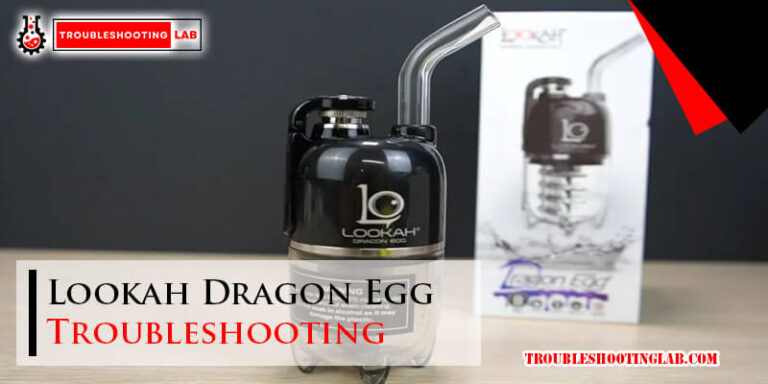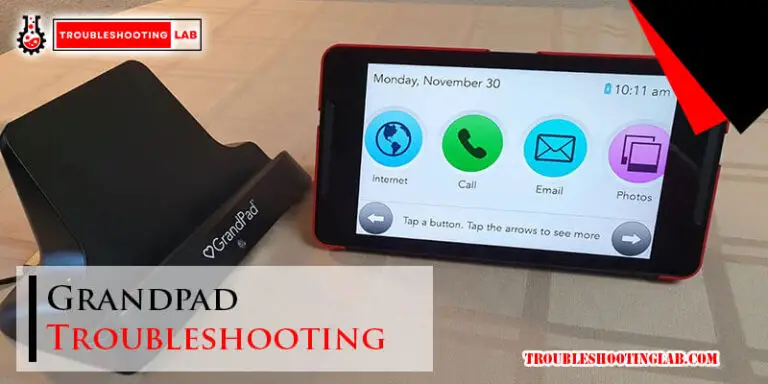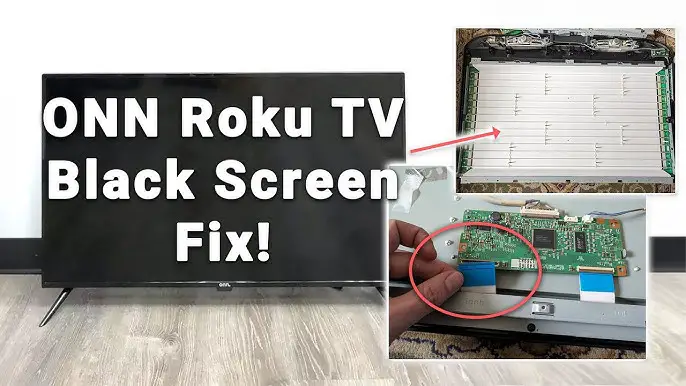Weboost Troubleshooting: Quick Fixes for Signal Issues
Imagine this: you’re on an important call and suddenly, your signal drops. Frustrating, isn’t it?
That’s where Weboost comes in—a popular solution designed to keep your signal strong and reliable. But what happens when your Weboost doesn’t seem to be boosting as it should? You might feel stuck and unsure about what steps to take next.
Don’t worry! You’re not alone in this, and help is at hand. This article is here to guide you through the troubleshooting process step by step, ensuring your Weboost device performs at its best. Dive in to discover simple yet effective solutions that will make weak signals a thing of the past. Your seamless connectivity is just a few steps away!

Credit: www.youtube.com
Common Signal Problems
Weboost devices often face signal issues that can disrupt communication. Users frequently encounter a variety of signal problems. Understanding these issues helps in effective troubleshooting.
Weak Signal Strength
Weak signal strength is a common issue with Weboost devices. It usually happens in remote areas. Buildings with thick walls can also cause weak signals. Ensure the outdoor antenna is correctly positioned. Align it towards the nearest cell tower. Regularly check for any obstructions around the antenna.
Intermittent Connectivity
Intermittent connectivity can frustrate users. It often results from fluctuating signal strength. Weather conditions can also impact the signal. Ensure all cables are secure and undamaged. Avoid placing the device near electronic appliances. These can interfere with the signal.
No Signal Detected
No signal detected is a critical issue. It may result from incorrect installation. Check all device connections thoroughly. Ensure the outdoor antenna is properly mounted. Sometimes, device settings need adjustment. Consult the manual for specific setup instructions.
Initial Diagnostic Steps
Start by checking the power supply to ensure it’s working properly. Verify all cable connections and tighten loose ones. Inspect antenna placements for proper alignment and check signal strength indicators. These steps help identify basic issues with Weboost devices, guiding further troubleshooting efforts.
If your Weboost device isn’t working as expected, don’t worry. You can often resolve issues by following some initial diagnostic steps. Start by addressing the most common problems. This way, you’ll save time and avoid frustration. It’s like playing detective with your own tech gear. You’ll be surprised how often a simple check can fix the issue.Check Power Connections
First, ensure your Weboost device is plugged into a working power outlet. Is the power light on? If not, try a different outlet or test the device with another power adapter. A loose connection can cause your device to malfunction. Ensure the plug is snugly fitted into both the outlet and the device. This simple check can often resolve mysterious outages.Verify Cable Connections
Next, inspect all cable connections. Are they securely attached? Loose cables can lead to signal loss. Double-check each connection point; sometimes they need a gentle push. Cables wear out over time. Look for visible signs of damage, like frayed wires or bent connectors. Replacing a damaged cable may be all it takes to get your device working again.Inspect Antenna Placement
The placement of your antenna is crucial. Is it positioned correctly? An antenna placed near metal objects or electronic devices can cause interference. Experiment with different locations to find the optimal spot. Height matters too. Try elevating the antenna for better reception. Perhaps moving it closer to a window or higher up on a shelf will make a difference.These steps are straightforward yet effective. Have you ever discovered a loose cable that solved everything? Share your experience or thoughts below. Your insight could help someone else troubleshoot their device.
Optimizing Antenna Placement
Enhancing signal strength often involves adjusting antenna placement. Weboost troubleshooting can help identify optimal spots for antennas. Proper placement reduces signal interference, ensuring better connectivity.
Optimizing antenna placement is crucial for enhancing your Weboost signal booster performance. It can make the difference between a patchy signal and crystal-clear connectivity. You might be surprised how much the right placement can improve your signal strength. Let’s dive into how you can maximize your antenna’s potential.Finding The Best Location
Identifying the perfect spot for your antenna is like finding the sweet spot for your Wi-Fi router. You want it to be central yet unobstructed. Imagine placing your antenna where it can catch the strongest signal—often higher places like rooftops or upper floors work best. Experiment by moving the antenna around and checking signal strength on your phone. It’s a process of trial and error, but once you find that prime location, your signal will soar.Antenna Orientation Tips
Orientation matters as much as location. Pointing the antenna towards the nearest cell tower can boost signal reception dramatically. Think of your antenna like a satellite dish—aim it accurately for the best reception. A small change in angle can increase your coverage area. Use apps or websites to locate nearby towers and adjust accordingly.Avoiding Signal Blockers
Signal blockers can be sneaky. They include thick walls, large metal objects, and even dense foliage. Consider what might be obstructing your signal. Do you have metal cabinets or concrete walls nearby? Try relocating your antenna to a more open area. Are you overlooking something simple that might be affecting your signal? Keep a lookout for everyday items that might be interfering. Removing obstacles can lead to a noticeable improvement in signal strength. Optimizing antenna placement doesn’t require you to be a tech wizard. It’s about understanding your environment and making smart adjustments. So, what changes will you make to boost your signal today?
Credit: powerfulsignal.com
Adjusting Booster Settings
Tweaking booster settings can solve Weboost issues efficiently. Optimize signal strength by adjusting gain controls. Ensure cables and antennas are properly connected.
Adjusting booster settings can significantly enhance your Weboost experience. Whether you’re dealing with dropped calls or slow data speeds, fine-tuning the booster settings can make a noticeable difference. Let’s dive into the essential aspects of adjusting these settings to optimize performance and ensure your booster works seamlessly.Understanding Gain Control
Gain control is crucial for managing signal strength. Adjusting the gain allows you to balance the incoming signal to avoid interference or overload. Imagine it as the volume knob on your radio. Too high, and it distorts; too low, and you can’t hear anything. You need to tweak it to find that sweet spot. Start by accessing the gain control settings on your booster. If your signal is weak and calls drop frequently, slightly increase the gain. Conversely, if your booster is too close to the tower, reduce the gain to prevent overload. Test different settings and observe changes in call quality and data speed.Resetting The Booster
Sometimes, a quick reset can resolve lingering issues. Think of it like rebooting your computer when it acts up. A reset can clear minor glitches and refresh the system. Are you finding your booster isn’t performing as expected despite proper setup? Try resetting it. To reset, simply unplug the booster from the power source, wait for about 10 seconds, and plug it back in. This process can correct minor errors in configuration and improve signal reception. After resetting, monitor the signal and call quality to see if there’s an improvement.Firmware Updates
Keeping your booster’s firmware updated is vital for optimal performance. Firmware updates often bring bug fixes and enhancements that can elevate your device’s functionality. Picture it as updating apps on your phone for better features and security. Check the manufacturer’s website or user manual for any available firmware updates. Download and install these updates as they become available. This proactive approach ensures your booster remains compatible with new technologies and delivers consistent performance. Have you been neglecting these updates? Consider setting a reminder to check for updates regularly. This simple practice can prevent potential issues and keep your booster running smoothly. Adjusting booster settings doesn’t have to be daunting. With these actionable insights, you’re equipped to tackle common issues and enhance your Weboost experience. What other steps have you found helpful in optimizing your booster settings? Share your thoughts and experiences in the comments below!External Factors Affecting Signal
Obstacles like tall buildings and thick walls can weaken the signal for Weboost devices. Weather conditions such as rain and snow may also impact performance. Understanding these external factors is vital for effective troubleshooting and maintaining optimal signal strength.
When troubleshooting your Weboost signal booster, it’s crucial to consider external factors that might be affecting your signal. These factors can drastically impact your device’s performance, even if everything else seems to be in perfect working order. Understanding how these external influences work can help you optimize your setup and get the best possible performance from your Weboost device.Weather Conditions
Weather can play a surprisingly significant role in signal quality. Rain, snow, and fog can weaken signals because they absorb and scatter radio waves. If you notice a drop in signal strength during a storm, it’s not just your imagination. Consider adjusting your antenna temporarily to see if it improves the signal. Sunny and clear days, on the other hand, generally provide better conditions for signal reception. But even then, atmospheric conditions like humidity can still have minor impacts.Building Materials
The materials used in your building can either help or hinder your signal strength. Metal roofs, concrete walls, and thick insulation can block or weaken signals significantly. If you live in a house with dense materials, try placing the external antenna in a location with fewer obstructions. You might find that moving your booster closer to a window improves your signal reception. Consider using a signal meter to identify the best location for your antenna. This small change can make a big difference in performance.Network Congestion
Network congestion is another external factor that can affect your signal. During peak hours, when many people are using their devices, the network can become overloaded. Have you ever noticed your internet slowing down in the evening? This is a common sign of network congestion. To mitigate this, try using your devices during off-peak hours. If that’s not feasible, upgrading your plan with your service provider might be a worthwhile investment. By understanding these external factors, you can take proactive steps to maintain a strong and reliable signal. What changes can you make today to improve your Weboost performance?Advanced Troubleshooting Techniques
Explore advanced techniques for Weboost troubleshooting. Identify signal issues with ease. Enhance performance by adjusting settings. Troubleshoot connectivity problems swiftly. Improve your Weboost experience with these practical solutions.
When dealing with Weboost troubleshooting, basic fixes might not cut it. That’s where advanced techniques come in. These methods are designed to tackle deeper issues, ensuring that your signal booster performs optimally. Whether you’re frustrated by weak signals or baffled by inconsistent performance, these strategies will help you gain insights and solutions. Let’s dive into some advanced troubleshooting techniques.Using A Signal Meter
A signal meter can be your best friend in diagnosing Weboost issues. It allows you to measure the strength and quality of your signal. Have you ever wondered if your booster is placed correctly? With a signal meter, you can test different locations and angles to find the sweet spot. Even if you’re not tech-savvy, using a signal meter is straightforward. Simply connect it and check the readings. If the signal is weak, try moving the booster or adjusting its direction.Isolation Testing
Isolation testing is a powerful technique that involves separating parts of your setup to pinpoint problems. Imagine you’re a detective, searching for clues. By isolating components, you can identify what’s causing the issue. Start by disconnecting everything except the booster and power source. Do you notice any changes? If things improve, reconnect each component one by one. This process helps you find the faulty link in your system.Professional Assistance
Sometimes, advanced issues require expert help. Have you ever felt overwhelmed by technology? It’s okay to seek professional assistance. An expert can provide insights that you might not have considered. Professionals have the tools and experience to diagnose complex problems. Is your signal still not improving despite your efforts? Reach out to a technician who can offer solutions tailored to your setup. In the realm of Weboost troubleshooting, these advanced techniques can be game-changers. By using a signal meter, conducting isolation tests, and considering professional help, you can tackle even the toughest signal issues. What’s your next move to ensure optimal signal strength?Maintenance Tips
Ensure your Weboost device functions smoothly with simple troubleshooting tips. Check connections regularly to prevent signal issues. Restart the device to resolve minor glitches swiftly.
Maintaining your Weboost system isn’t just about keeping it running smoothly; it’s about ensuring you get the best signal amplification possible. Regular maintenance can prevent unexpected disruptions and extend the life of your equipment. Dive into these maintenance tips to keep your Weboost system at its peak performance.Regular Equipment Checks
Set a schedule to check your Weboost equipment. Make it a part of your monthly routine. Look for loose connections and ensure cables are tightly secured. This simple step can prevent signal loss and interference. Imagine your Weboost as the heartbeat of your connectivity. You wouldn’t want a weak pulse, right? A quick check can reveal potential issues before they escalate.Cleaning Antennas
Dust and debris can affect your antenna’s efficiency. Clean your antennas every few months to ensure optimal performance. Use a soft cloth to wipe away dirt and grime. You might be surprised by how much cleaner antennas can improve signal strength. Remember that time you struggled with a weak signal during an important call? A clean antenna could be the secret to avoiding that frustration.Periodic System Reviews
Review your system settings periodically. Make sure everything is configured correctly. Sometimes a small tweak can make a big difference in performance. Reflect on your last system review. Did it reveal any settings that needed adjustment? An occasional review can lead to unexpected improvements. Are you maximizing your Weboost’s capabilities? By staying proactive, you ensure a seamless connectivity experience. Do you have other maintenance tips that have worked wonders for your Weboost system? Share your experiences in the comments below!
Credit: novotech.com
Frequently Asked Questions
Why Is My Weboost Not Working?
Check connections and power. Ensure all cables are secure. Make sure the device is turned on.
How Do I Reset My Weboost Device?
Unplug, wait 10 seconds, then plug back in. This resets the system.
Why Is My Signal Still Weak With Weboost?
Check antenna placement. Ensure it’s in a high, unobstructed location for best performance.
Can Weather Affect My Weboost Performance?
Yes, heavy rain or snow might impact signal. Adjust antenna for better reception during bad weather.
How Can I Improve My Weboost Signal?
Relocate the antenna. Experiment with different spots to find the best signal strength.
Conclusion
Troubleshooting your Weboost can feel overwhelming. But it doesn’t have to be. Simple steps often solve most issues. Start by checking connections and power sources. Signal strength is crucial too. Adjust antenna positions for better reception. Still facing problems? Consult the user manual.
It offers practical solutions. Online forums can also help. Many users share their experiences. Professional support is always an option when needed. Keeping your Weboost working smoothly ensures better connectivity. Stay patient and methodical. Solutions are often closer than they seem.
Enjoy a stronger signal and improved communication with these tips.





